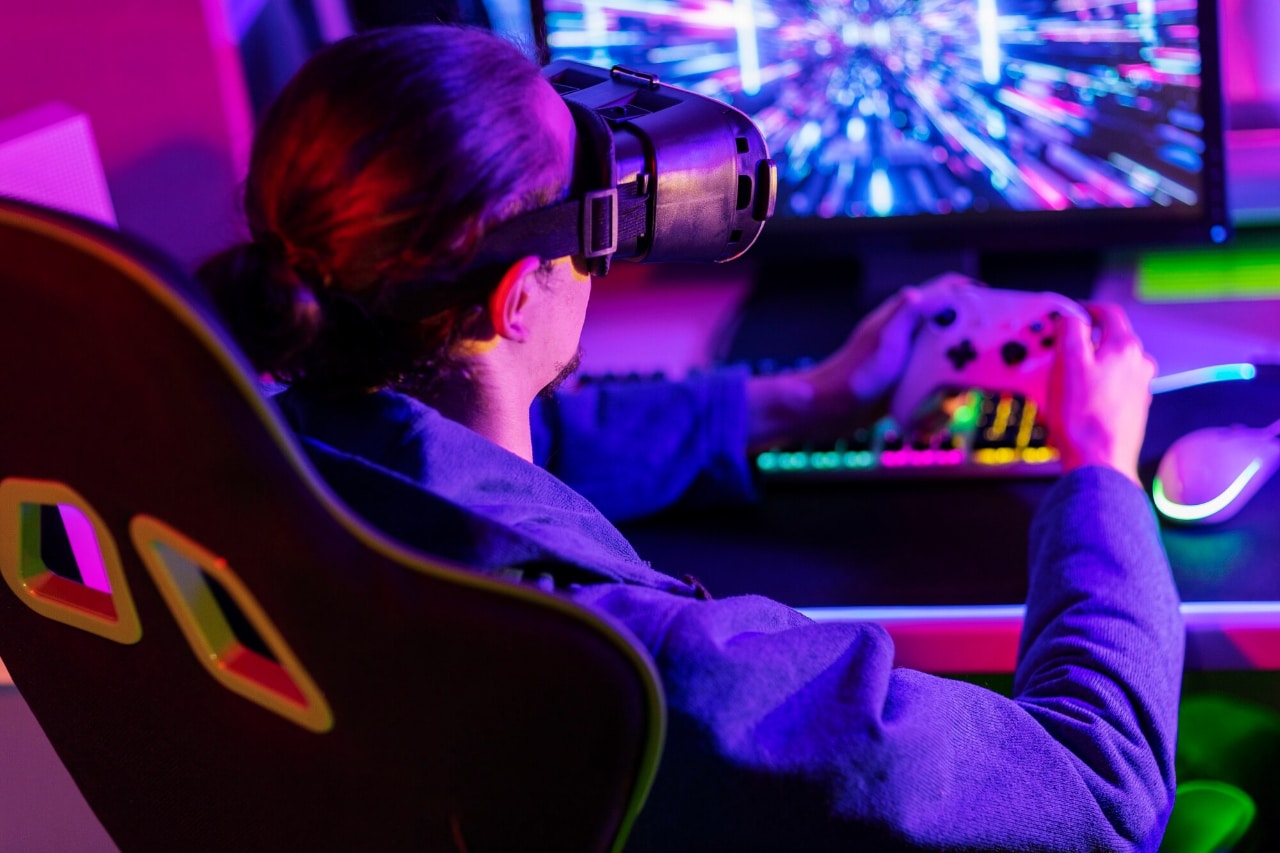Ever noticed how your gaming and entertainment experiences have gotten way more realistic over the past few years? That’s not by accident. The digital entertainment landscape is undergoing a massive transformation, and we’re all along for the ride.
Evolution of Digital Entertainment
Remember when we thought 3D movies were the peak of immersion? Those days feel almost quaint now. Digital entertainment has moved far beyond simple visual tricks to create experiences that blur the line between virtual and reality.
The path from arcade games to today’s virtual worlds wasn’t straight or predictable. Each technological breakthrough opened doors nobody even knew existed. What started with basic pixels has evolved into entire universes we can step into and interact with.
From Passive to Active Engagement
Traditional entertainment kept us as observers – watching movies, listening to music, playing games on websites like Richards Casino or reading stories created by others. The new wave pulls us right into the action.
Gaming led this charge. Instead of just pressing buttons to make characters move, we now use our whole bodies, make verbal commands and even control games with our thoughts (yes, that’s actually happening with neural interfaces).
Technologies Driving the Immersive Revolution
Our team has been tracking these technological shifts closely, noting how they’re reshaping not just gaming but all forms of digital entertainment.
Virtual Reality: Beyond the Headset
VR has come a long way from clunky headsets and limited movement. The newest systems offer:
- Full body tracking
- Haptic feedback suits that let you “feel” virtual objects
- Omnidirectional treadmills for natural movement
- Eye-tracking for more intuitive interfaces
- Wireless capabilities for unrestricted play
The most exciting part? VR is breaking out of gaming to transform how we watch sports, attend concerts and even socialize online.
Augmented Realit
While VR creates new worlds, AR enhances the one we live in. Those Pokémon GO days were just the beginning. AR is now being used for:
- Interactive museum exhibits
- Live sporting event overlays
- Shopping experiences where you can “try” products at home
- Educational tools that make learning three-dimensional
- Social media filters that go way beyond dog ears
AR doesn’t require a headset (though those are coming in sleeker forms), making it more accessible to the average person through smartphones and tablets.
AI and Personalization
Artificial intelligence might be the most transformative technology in entertainment. It’s working behind the scenes to:
- Create personalized content recommendations
- Generate dynamic storylines that adapt to your choices
- Develop NPCs (non-player characters) that learn and evolve
- Design custom difficulty levels based on your skill
- Produce entirely new music, art and stories
Social Dimension of Immersive Entertainment
Entertainment has always been social, from gathering around campfires for stories to movie theaters and concert venues. Digital immersion is taking this social element to new levels.
Virtual Spaces as Social Hubs
The pandemic accelerated our move into virtual social spaces. Platforms like VRChat, Rec Room and Horizon Worlds aren’t just games – they’re places where people form real connections.
These spaces host everything from casual hangouts to business meetings, concerts and even weddings. The boundaries between “online” and “real life” continue to fade.
Collaborative Creation
User-generated content isn’t new, but the tools are getting more powerful. Regular people with no coding experience can now build virtual worlds, design games and create experiences for others to enjoy.
This democratization of creation means the next big entertainment trend might come from a teenager in their bedroom rather than a major studio.
Challenges and Considerations
With great immersion comes great responsibility. As these technologies become more engrossing, we need to consider:
Physical and Mental Health
Extended time in virtual worlds can affect everything from eye strain to posture. There’s also the risk of addiction when experiences are designed to be as compelling as possible.
Developers are working on solutions like built-in break reminders, physical activity integration and more ergonomic designs.
Privacy Concerns
Immersive tech collects unprecedented amounts of data – not just what you click on, but how you move, where you look and even physiological responses like heart rate.
This data makes experiences better but raises serious questions about privacy and security that need addressing.
What’s Next for Digital Entertainment?
The line between different forms of entertainment is disappearing. Games look like movies. Movies offer interactive elements. Music creates visual experiences.
We’re moving toward a unified entertainment landscape where the medium matters less than the experience it creates. The future probably includes:
- Brain-computer interfaces for direct neural stimulation
- Holographic displays that require no headsets
- Full sensory experiences including smell and taste
- AI companions that know you better than you know yourself
- Entertainment that adapts in real-time to your emotional state
The most exciting part? We’re just at the beginning of this journey. The digital entertainment of 2030 will make today’s cutting-edge experiences look as outdated as flip phones.
The immersive revolution isn’t coming – it’s already here, evolving every day and changing how we play, connect and experience stories forever.

